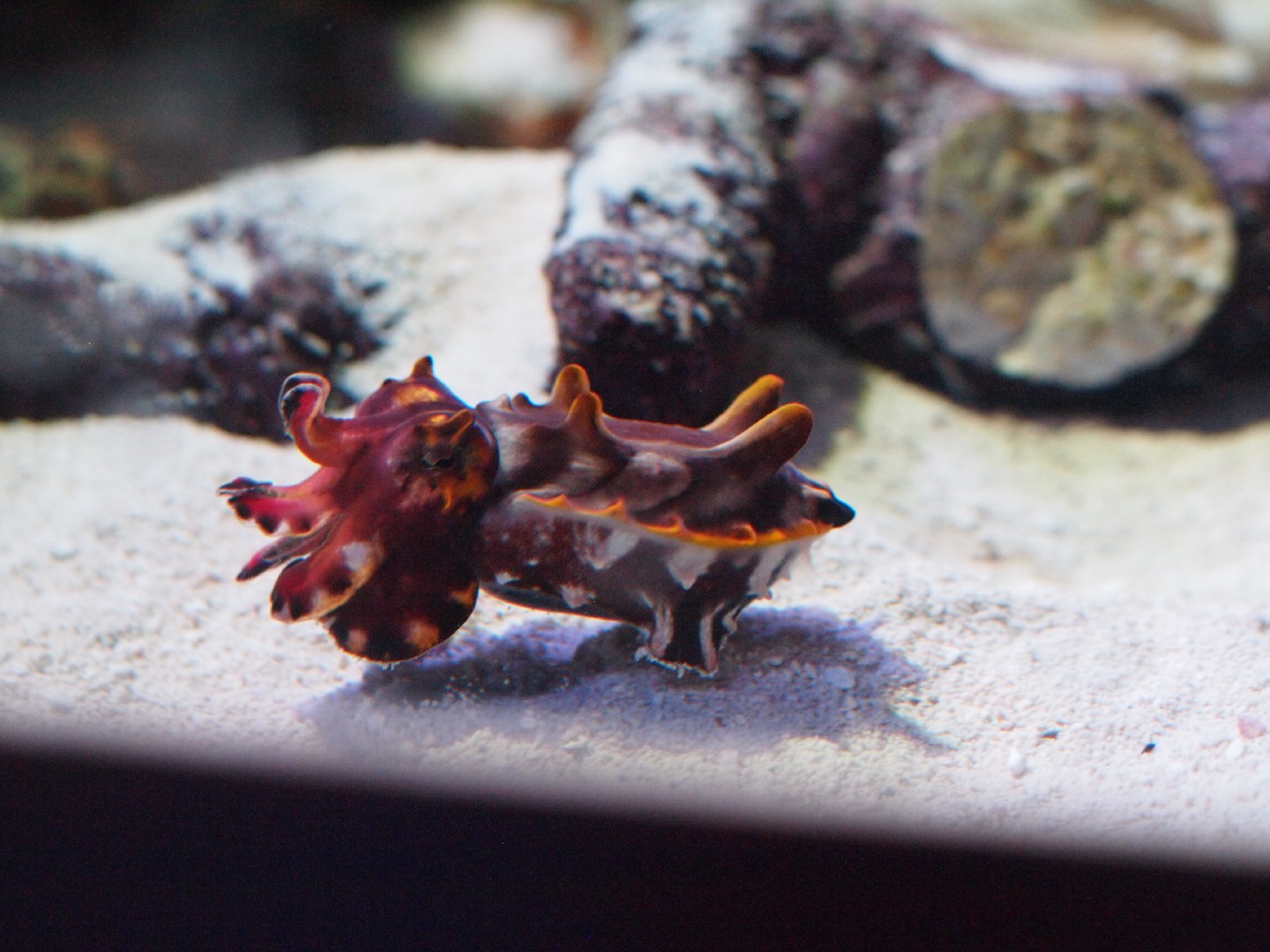Flamboyant cuttlefish
A species of Flamboyant cuttlefish Scientific name : Metasepia pfefferi Genus : Flamboyant cuttlefish
Flamboyant cuttlefish, A species of Flamboyant cuttlefish
Botanical name: Metasepia pfefferi
Genus: Flamboyant cuttlefish
Content
Description People often ask
 Photo By Bill Abbott , used under CC-BY-SA-2.0 /Cropped and compressed from original
Photo By Bill Abbott , used under CC-BY-SA-2.0 /Cropped and compressed from original Description
M. pfefferi is a robust-looking species, having a very broad, oval mantle. Arms are broad and blade-like and have four rows of suckers. The modified arm used by males for fertilisation, called the hectocotylus, is borne on the left ventral arm. The oral surface of the modified region of the hectocotylus is wide, swollen, and fleshy. It bears transversely grooved ridges and a deep furrow running along the middle. The sucker-bearing surface of the tentacular clubs is flattened, with 5 or 6 suckers arranged in transverse rows. These suckers differ greatly in size, with the largest located near the centre of the club. Three to four median suckers are especially large, occupying most of middle portion of the club. The swimming keel of the club extends considerably near to the carpus. The dorsal and ventral protective membranes are not joined at the base of the club, but fused to the tentacular stalk. Dorsal and ventral membranes differ in length and extend near to the carpus along the stalk. The dorsal membrane forms a shallow cleft at the junction with the stalk. This particular species of cuttlefish is the only one known to walk upon the sea floor. Due to the small size of its cuttlebone, it can float only for a short time. Most sources agree that M. pfefferi grows to 8 cm (3.1 in) in mantle length, although others give a maximum mantle length of 6 cm (2.4 in). The dorsal surface of the mantle bears three pairs of large, flat, flap-like papillae. Papillae are also present over the eyes. The cuttlebone of this species is small, two-thirds to three-quarters the length of the mantle, and positioned in its anterior. Characteristic of the genus Metasepia, the cuttlebone is rhomboidal in outline. Both the anterior and posterior of the cuttlebone taper gradually to an acute point. The dorsal surface of the cuttlebone is yellowish and evenly convex. The texture throughout is smooth, lacking bumps or pustules. The dorsal median rib is absent. A thin film of chitin covers the entire dorsal surface. The cuttlebone lacks a pronounced spine; if present, it is small and chitinous. The striated zone of the cuttlebone is concave, with the last loculus being strongly convex and thick in the front third. The sulcus is deep and wide and extends along the striated zone only. Striae (furrows) on the anterior surface form an inverted V-shape. The limbs of the inner cone are very short, narrow, and uniform in width, with the U-shape thickened slightly towards the back. The cuttlebone of M. pfefferi does not possess an outer cone, unlike that of most other cuttlefish species.
* Disclaimer: The judgment on toxicity and danger is for reference only. We DO NOT GUARANTEE any accuracy of such judgment. Therefore, you SHALL NOT rely on such judgment. It is IMPORTANT TO SEEK PROFESSIONAL ADVICE in advance when necessary.
People often ask
Is the flamboyant cuttlefish poisonous?
How long do flamboyant cuttlefish live?
How big does flamboyant cuttlefish get?
What does flamboyant cuttlefish eat?
Scientific Classification
Phylum
Molluscs Class
Inkfish Order
Bobtail squid Family
Cuttlefishes Genus
Flamboyant cuttlefish Species
Flamboyant cuttlefish